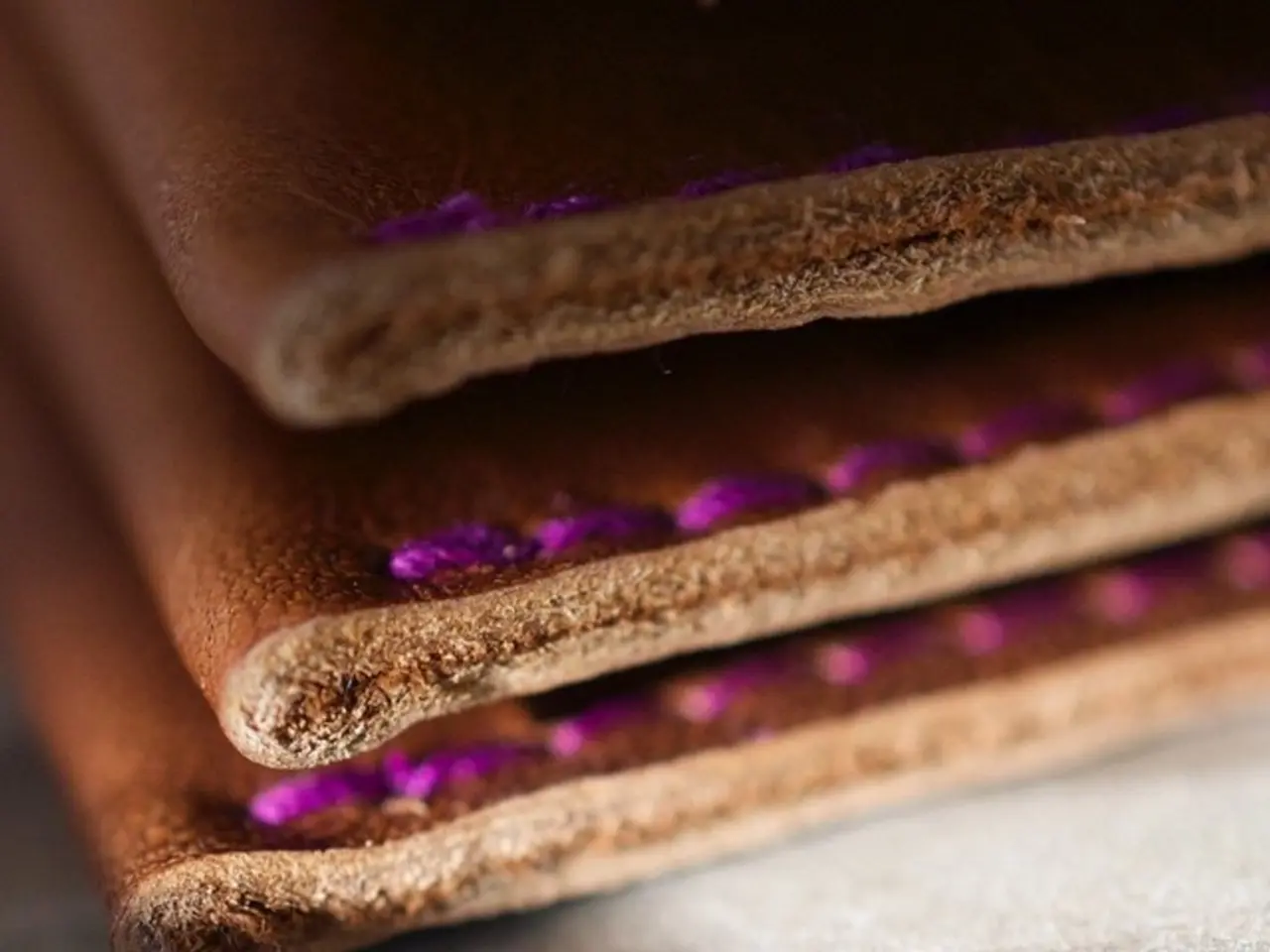Material Innovations Propelling a Wide-Ranging Transformation: Fashion and Construction Sectors at the Brink of a Groundbreaking Transformation
In the heart of the green revolution, a Dutch biotech company named Qorium is making waves in the fashion industry by revolutionising the leather production process. Using cellular agriculture, Qorium is producing lab-grown leather that addresses pressing climate and ethical concerns, offering alternatives to traditional animal-based leather and synthetic materials derived from fossil fuels.
Currently, lab-grown leather significantly reduces reliance on animal agriculture and its associated environmental impacts, such as land use, water consumption, and greenhouse gas emissions. It also eliminates the need for animal slaughter, aligning with growing consumer demand for cruelty-free products. Companies like Avant (with Zellulin® ZelluGEN™) and Qorium are pioneering this technology, with recent milestones including the certification of non-food products like Zellulin®, which uses cell cultivation to create complex peptides, ensuring transparency and ethical standards through labels such as the C-Label by V-Label.
The certification of cellular agriculture-derived products demonstrates industry recognition and consumer trust, paving the way for broader adoption in fashion. Brands are eager to meet sustainability targets and differentiate themselves in a competitive market. One such example is von Holzhausen’s Liquidplant™, a plant-based material that already fits into current production processes, indicating that lab-grown leather is likely to follow a similar path, reducing the need for new infrastructure investments.
As technology progresses, lab-grown leather could become a cornerstone of the circular, low-impact fashion ecosystem. Next-generation materials could cover 8% of the global fiber market by 2030, equivalent to 13 million tons. In the fashion industry, materials account for approximately 30% of the cost of goods sold. The fashion industry's emissions primarily result from the extraction, processing, and production of materials, with materials being responsible for over 90% of the total emissions from extraction, processing, and production.
Qorium, like other leaders in the field, is expected to contribute to developing high-performance, sustainable leather alternatives, setting new industry standards for transparency and ethical sourcing, and accelerating the shift away from animal-derived and fossil-based materials. As production and regulatory hurdles are overcome, large-scale adoption of next-generation materials could reduce the cost of goods sold by up to 4% in the next five years.
Josko Bobanovic, partner of Industrial Biotechnology Funds Sofinnova Partners, comments that much of the environmental impact is linked to the avoidance of animal farming, but some elements relate to differences in processing, waste reduction, and elimination of certain chemicals. Qorium's leather production process eliminates animal cruelty, offering a viable, sustainable, and ethical alternative to traditional leather.
The study "Scaling next-gen materials in fashion: an executive guide" conducted by Boston Consulting Group and Fashion for Good supports this, highlighting the direct environmental benefits of Qorium's lab-grown skins, including up to 87% less carbon emissions, elimination of methane emissions, reduction of water consumption by 64%, and over 95% reduction in land use.
In conclusion, cellular agriculture is reshaping the fashion industry by providing viable, sustainable, and ethical alternatives to traditional leather. As technology progresses, lab-grown leather could become a cornerstone of the circular, low-impact fashion ecosystem.
- The science of cellular agriculture is spearheading a revolution in the health-and-wellness sector, as Dutch biotech company Qorium pioneers lab-grown leather in the environmental-science field.
- Nutrition and cooking industries may also find ways to utilize cellular agriculture, as Qorium's emphasis on lab-grown products aligns with consumer demand for ethical and sustainable products.
- The environmental-science advances in lab-grown leather offer significant reductions in land use, water consumption, and greenhouse gas emissions, making it a preferable choice over traditional animal-based leather and synthetic materials derived from fossil fuels.
- Apart from the fashion industry, restaurant trends revolving around food-and-drink and global-cuisines may adopt lab- grown materials, further contributing to the growth and demand for Qorium's leather alternatives.
- As technology advances in fashion, fashion-and-beauty industries could witness a transformation with sustainable materials, such as lab-grown leather, becoming crucial components of the lifestyle sector and reducing environmental impact.
- Qorium's efforts in laboratory-grown leather could potentially impact the technology sector, as emerging materials like next-generation materials could cover 8% of the global fiber market by 2030, equivalent to reducing emissions by climate-friendly means.




